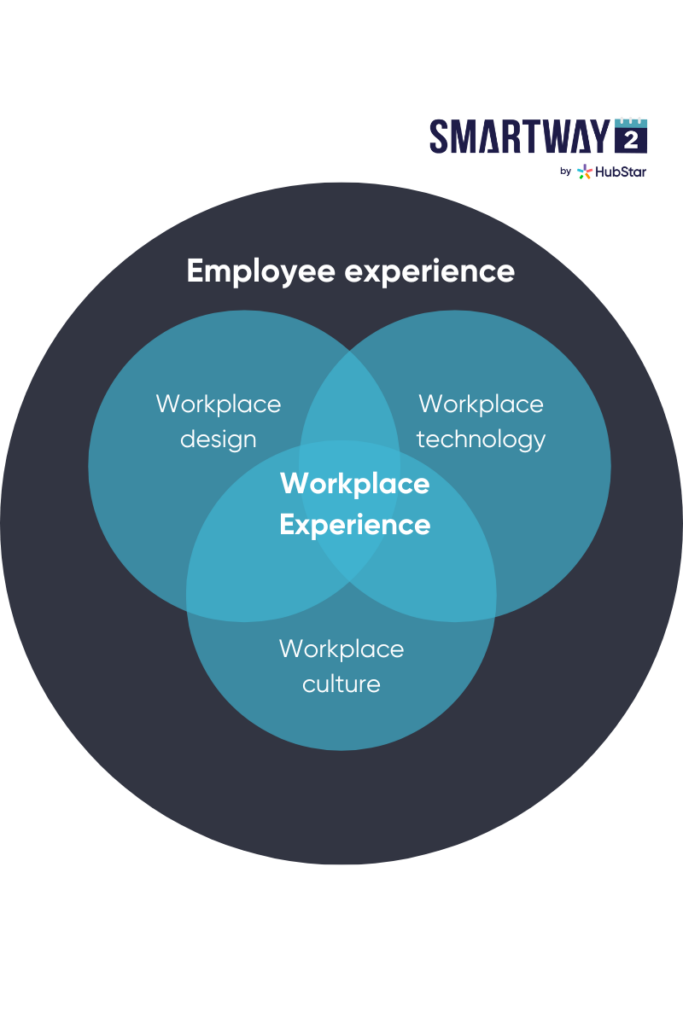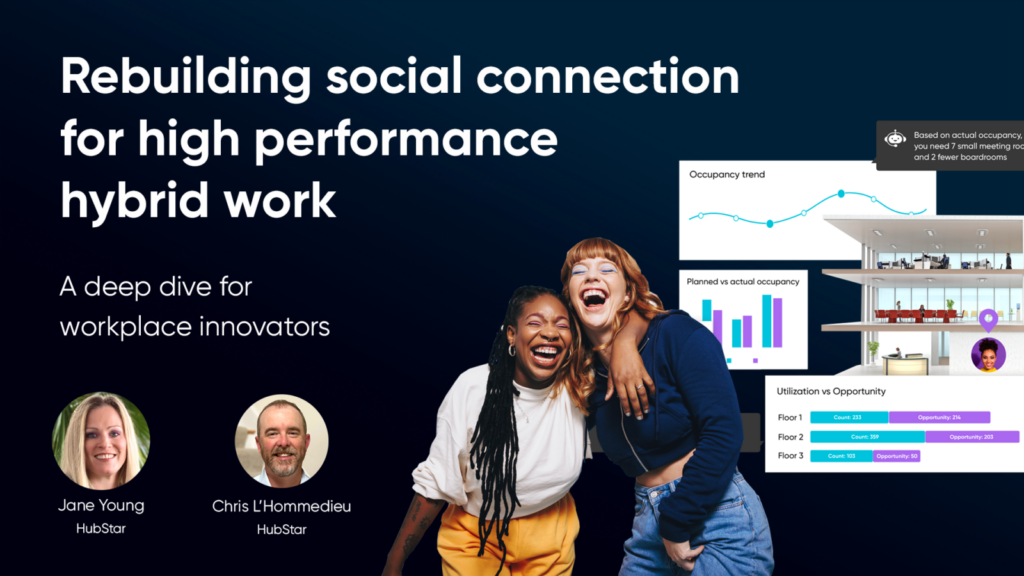
6 Ways to Improve Your Workplace Experience in 2024
Employees are looking for a great workplace experience. But does your business provide one? Let’s look at how you can implement a better workplace experience strategy to help grow your business and improve employee wellbeing.
Only 1% of executives have employees working fully remotely according to a recent survey by Ernst & Young, down from 34% in 2022. So for the other 99% of executives with employees interacting with an office in some shape or form, improving workplace experience is becoming increasingly more critical.
But what can you do to improve something as abstract as workplace experience, which can mean a lot of different things to different people?
Asking these questions now is definitely a wise move. As we’ll see a little later, an improved workplace experience positively impacts recruitment and retention.
And with 75% of Chief Human Resources Officers prioritizing employee experience improvements in 2024, if you’re looking for a time to start improving your workplace, it’s now.
In this post, we’ll cover the definition of a positive workplace experience and six things you can do to start improving yours in 2024.
What is workplace experience?
A workplace experience is how employees internalize and interpret the interactions they have with their company’s physical workplace, plus the context underlying those interactions.

An employee’s workplace experience is determined by three different components:
Office layout and design
This includes everything from office architecture to the physical resources you have available to employees.
It’s been proven that “both architectural and atmospheric elements can determine employee perceptions about social norms, organisational behaviour and social interaction possibilities”, according to a 2022 study on how office aesthetics drive employee experience, well being and even job choice.
Workplace technology
The digital work environment is another element of workplace experience. And with many employees spending at least some of their time working remotely, the workplace tech that connects people has become just as important as the physical workplace.
With the help of effective, easy-to-use technology, employees should get the same workplace experience whether they’re working remotely or in the office.
Workplace culture
64% of employees feel they don’t have a strong company culture. That’s pretty concerning, because it means more than half of employees don’t believe their organization has a strong set of behaviors, values and even a sense of psychological safety.
When people are in the same physical space, it’s workplace culture that creates the buzz, vibe and sets the stage for the quality of interactions people have with each other. Improving it takes more effort since culture isn’t just created in the workplace, but that’s where it manifests.
The importance of workplace experience
You may hear some businesses using the terms workplace experience and employee experience interchangeably. But the two terms are actually a little different.
Workplace experience is more focused on how a workplace’s physical and digital reality impacts how an employee feels about working there. And it forms part of the overall employee experience.

Employee Experience vs Workplace Experience: What’s the Difference?
Workplace experience impacts a variety of different business objectives, and it has the potential to improve all of the following:
Employee experience and satisfaction
When employees don’t have a comfortable work environment and don’t have the tools and resources they need to get a job done, they feel frustrated, which impacts their satisfaction levels.
Studies show that employee unhappiness has a ripple effect throughout the whole workforce.
Improving the workplace experience can help you to get on top of dissatisfaction and employee complaints before they become bigger problems.
Productivity
When employees feel supported by their physical and digital office and company culture, fewer obstacles stand in the way of their day-to-day work. Whether at home or in the office, they have everything they need to do their jobs to the best of their ability.
But all work and no play can leave people feeling burned out and less productive in the long run. So a positive workplace experience also acknowledges the need for breaks and fun.
This is why some offices have incorporated tech-free detox spaces, meditation rooms and outdoor spaces into their workplace design.
Talent retention and attraction
Why would employees look for another job when they feel happy and productive and work in a space that supports their well-being?
A focus on workplace experience can help to improve employee retention. It can also give your talent acquisition efforts a boost, and it’s even been proven that office aesthetics can determine which job offers employees accept.
That’s because:
- Happy employees are more likely to sing your praises on employer review sites
- Workplace experience contributes to a positive employer brand
- You have a vibrant, welcoming office space that you can showcase to candidates
- You attract diverse talent because you provide a wider variety of work environments
Reduced real estate costs
Real estate is usually a company’s second biggest cost after salaries. And now that office occupancy has plateaued and large swathes of office spaces are sitting empty, any way to reduce real estate costs is welcome. An improved workplace experience helps get people back into the office and make better use of the space you do have. It also shines the spotlight on underused spaces that can be repurposed or cut from the portfolio altogether.
By examining the workplace experience, you analyze how employees use the physical office spaces available to them. You can then find ways to maximize the value of that space and potentially use less space too.
Better business growth
All of the benefits listed above combine to create a positive company culture where employees feel actively engaged in their work.
This translates into better business growth because:
- Happy workers are 20% more productive
- Companies with a highly engaged workforce have 21% higher profits
- Organizations with a highly connected workforce are more likely to minimize customer costs and meet financial targets
- Considering that workplace stress costs the US economy $500 billion, a workplace experience that promotes employee wellbeing (which is most important) saves money (still important but not as much as people’s wellbeing)
6 ways to improve your workplace experience in 2024
1) Talk to employees
Hybrid workers come into the office for a variety of different reasons. Some are seeking a quiet retreat away from their noisy kitchen table while others want face-to-face communication in collaborative workspaces.
But what do your employees want from a workspace experience?
You have to ask them to find out. Employees should always be your first point of call when you’re planning to make workplace changes.
They can identify friction points in the physical and digital workspaces and suggest improvements. This provides an excellent foundation for your workplace experience plans.
Crafting the perfect employee workplace survey is both an art and a science. Get it right, and you’ll understand how to build your office experience around what employees want.

23 Questions to Ask in Your Next Employee Workplace Survey
2) Plan your office layout and design
Whether your employees are in the office every day or only sporadically, office layout and design has a huge impact on their workplace experience.
It may not be something you’ve considered in great depth, but it’s worth taking the time to really understand whether your office layout is currently working for your employees.
Think about whether your office is conducive to a variety of workplace activities, such as:
- Quiet, concentrated work
- Creative collaboration
- Informal meetings
- Formal meetings
- Private client calls
- Break time and recreation
Your office layout should provide comfortable spaces for all of these activities.
If your office layout is falling short, there are many ways you can adapt it to suit the needs of the modern workplace.
You can implement flexible office space or activity-based working, incorporate office pods, install a coffee shop area for informal get-togethers, or use modular office furniture so spaces can fulfil more than one function.
The founding principle?
3) Adopt a hospitality mindset for your offices
81% of employees having a great workplace experience say that choice of working environments is at the heart of it. People aren’t going to stick with a company that doesn’t take care of their comfort and well-being. That’s why some facilities managers are choosing to treat employees like a hotel would treat their customers.
This hospitality mindset helps ensure employees get an enhanced workplace experience, not just the bare minimum. Some big corporations are taking this concept to the next level, providing on-site fitness classes and spa facilities.
But you don’t have to max out the budget to make employees feel cared for. Ensuring that you’re always ticking the basics is a great place to start.
You should try to provide:
- Clean and well-lit workspaces
- An ergonomic desk space, with a standing desk if requested
- A kitchen stocked with tea, coffee, and maybe a few healthy and unhealthy snacks
- A well-maintained office space
And if you can do more to increase employee comfort and enjoyment in the workplace, you’ll find that it’s well worth the investment.
4) Implement the right workplace technology
Workplace tech should empower people to get things done to the best of their ability and make it easier to plan a visit to the office.
Top notch desk monitors, communication and project management tools, AV equipment all make it easier to work in the office. But when employees have a choice between the office and the convenience of home, workplace tech needs to deliver something more.
Workplace booking and scheduling tools can be a pain to use when they’re clunky and not user-friendly. But when desk and meeting room booking systems are built for the complexity of numerous hybrid work schedules and workplace preferences like Smartway2, tech can actually make everyone’s workplace experience better. That’s because you have the certainty that you have control over your workplace experience, and what you get when you roll into the office is exactly what you signed up for.
The right tech removes friction between employees and having a productive, comfortable day in the office. It can even make the commute more worthwhile.
5) Hire a workplace experience manager
If managing the workplace experience on top of your teams’ existing responsibilities sounds like too much of an ask, consider hiring a dedicated workplace experience manager.
Another salary is a big commitment, but you may find that improved workplace experience helps you drive revenue and lower costs in other areas.
For example, good workplace experience can:
- Boost recruitment since potential employees are more likely to accept job offers
- Reduce your recruitment costs because employees are more likely to stick around
- Improve your sales because happy employees are more engaged with their work
- Improve productivity because employees are less likely to take time off sick
You also have someone who can drive workplace experience across your organization, linking facilities, IT, and HR teams to make your efforts a lot more effective.
6) Measure KPIs
How do you know if your workplace experience is actually improving?
Whether you hire a workplace experience manager or are simply increasing your budget for new office design or workplace tech, you need a way to judge the success of your efforts.
To do this, you can look at several different metrics.
- Employee satisfaction scores
- Employee retention rate
- Decreases in employee absenteeism
- Increase in internal promotions and job acceptances
- Customer satisfaction survey scores
By regularly surveying your employees and tracking the other stats you have available to you, you can set goals, measure progress, and find new ways to improve.
A great workplace experience rebuilds social connection and collaboration. But this can be tricky to get right with hybrid work patterns and schedules. Check out this on-demand webinar for a deep dive into how to rebuild social connected and create better workplaces.



